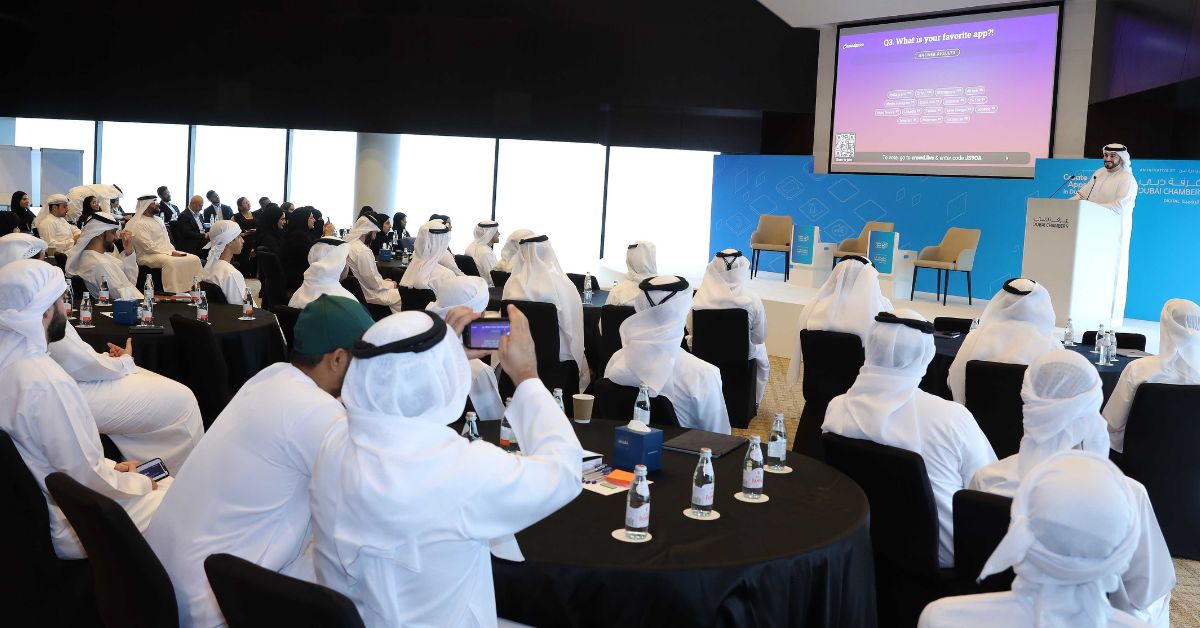DUBAI, UAE — Digital experiences have become a way of life today. As consumers, our views of a particular app or online portal are based on the experience it provides. Moreover, as individuals, it is the performance of digital services that determines our perception of the brands that deliver them. Digital transformation, therefore, remains “front and centre” of boardroom discussions.
IT spending in the Middle East and North Africa region in 2023 is estimated to total $175.5 billion, according to data released by Gartner earlier this year. This is up 2 percent from $171.9 billion in 2022, the report revealed. Worldwide IT spending is projected to total $4.6 trillion in 2023, an increase of 5.5 percent from 2022, according to Gartner. Despite continued global economic turbulence, all regions worldwide are projected to achieve IT spending growth in 2023.
While prevailing economic conditions and uncertainty have caused firms to scrupulously inspect budgets in a bid to “trim the fat,” digitization initiatives have been one of the few areas to see added investment.
GCC countries are increasingly looking to invest in digital. Saudi Arabia has created its Saudi Vision 2030 program, and the UAE is driving initiatives through its UAE Digital Government Strategy 2025. UAE’s program aims to double the contribution of the digital economy to the country’s GDP from 9.7 percent to 19.4 percent over the next 10 years, and the strategy is already bearing fruit.

The flagship giga projects in Saudi Arabia such as NEOM, the Red Sea Project, AMAALA, and Ad Diriyah will drive significant technology spending in 2023 and beyond as the Kingdom builds greenfield digital infrastructure and platforms, leveraging advanced technologies like AI/ML, IoT, edge, and 5G to create innovative use cases.
At the same time, as organizations across the region become more digitally mature, they must transition from enabling digital transformation to running a digital business. This requires them to derive a larger share of revenues from digital products, services, channels, and platforms, something that is now a priority for 50 percent of the Middle East CIOs surveyed by IDC.
A recent report by PwC Middle East stated that governments and businesses across the Middle East were beginning to realize the shift globally towards AI and advanced technologies. They were faced with a choice between being a part of the technological disruption or being left behind.
According to the PwC report, the contribution of AI is expected to be 12.4 percent of Saudi’s GDP, reaching US$135.2 billion in 2030. It is estimated that the Middle East is expected to accrue 2 percent of the total global benefits of AI in 2030 – equivalent to US$320 billion.
“The MENA digital transformation market makes up around 15 percent of the global digital transformation market, and the region is also experiencing rapid digital growth, according to a recent Future Markets Insight report. With digitalization spreading through industries such as financial, automotive, healthcare, retail, and telecommunications, the MENA digital transformation market is expected to reach around US$298.2 billion by 2032,” Andreas Simon, Regional Director MEA at Jedox, told TRENDS.

Explaining the reasons behind this steady momentum, Uday Shankar Kizhepat, Vice President and General Manager- Middle East and Africa Region, WSO2, said, “The Middle East is riding a wave of digital transformation. Every organization has in effect become a software company as they need to create differentiating digital experiences to survive and thrive. This is what is giving impetus to their digital transformation initiatives. At WSO2, we have the tools to help them achieve these goals.”
Digital transformation, of course, is an all-encompassing term that could mean different things to different organizations – depending on their line of business and level of IT maturity. However, while the technologies businesses implement can vary based on these and other factors, success is found when these initiatives are guided by sound principles.
“Digital transformations are the alterations to the products and services an organization utilizes and offers in order to enhance the way they collaborate and operate. The most important aspect of this is the integrated set of technology tools – whether these are cloud, data storage, mining, etc. It implies changing the way you work such that the result is better than previous benchmarks,” said Manish Mishra – Head, Middle East & Africa, Freshworks.
With this mindset firmly in place, organizations will be well served by identifying and answering pertinent questions that will shape their transformation roadmap. Kizhepat explained, “First, they need to fully understand what their end customers are looking for. This is based on an in-depth analysis of their business model and a clear idea of what their organizational goals are. It’s about how quickly they need to move into the market, what their competitors are doing, and what they intend to base their competitive edge around.”
While in the past, technology projects resided firmly in the domain of the IT department, the permeation of digital solutions into all aspects of the business means that this can no longer hold true. All stakeholders in an organization need to be clear on what the objectives of the undertaking are, how they want to execute on the project, and ultimately how they can measure the outcomes. “Once these factors are clear, selecting the right solutions, implementing them, and rolling them out to users becomes far more streamlined,” said Mishra.

He went on to explain that while all strategic transformation requires diligent planning and expert execution, the rewards to be had justify the investment. Commenting on the ROI of digital transformation projects, Mishra said, “This (ROI) can vary from customer to customer, based on the problem they are trying to solve with digital transformation, and how they go about solving this with various technologies. But on average, when we speak to customers, they tell us they’ve seen efficiency gains of up to 50 percent in terms of how they address customer queries.”
Achieving such impressive outcomes should be impetus enough for any organization to double down on its IT investments. And while this holds true, there are caveats. “Digital transformation is not just implementing new technology – it’s a journey. It’s not simply about the tools; it’s also about choosing the right route for your organization and then ensuring people understand where you’re wanting to go to. And it’s important to train staff on the new technology so that they get used to it and make the best use of it. It goes beyond the tools to the very company culture itself,” warns Simon.
Offering a final piece of advice to organizations that aim to ace their digital transformation, Simon added, “Ultimately, it’s about having a digital transformation mindset and staying on the path to digitalization.”

To sum it up, the digital transformation landscape in the Middle East is rapidly evolving, driven by strategic investments, technological advancements, and a clear vision for the future.
The region’s commitment to embracing digital solutions is evident in the growth projections and ongoing initiatives. However, the journey towards complete digital transformation is complex and requires careful planning, collaboration across all levels of the organization, and a willingness to adapt and innovate.
By focusing on the needs of the end customer and aligning digital strategies with organizational goals, businesses in the Middle East are well-positioned to thrive in the digital age. The emphasis on not just the technology but the culture, mindset, and strategic alignment ensures that digital transformation is not just a buzzword but a tangible path towards efficiency, growth, and success.








